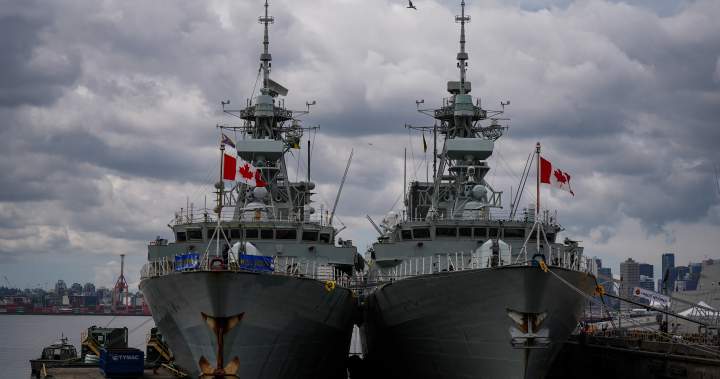In a significant restructuring move that will reshape Canada’s maritime defense capabilities, the Royal Canadian Navy has announced plans to decommission eight aging warships by the end of 2024. This strategic pivot comes amid mounting maintenance challenges and the looming arrival of new vessels under the National Shipbuilding Strategy.
The retirement affects nearly one-third of the navy’s current fleet, including several Halifax-class frigates that have served as the backbone of Canada’s naval operations for decades. According to defense officials speaking on condition of anonymity, the decision was driven by “unsustainable maintenance costs” and the need to reallocate resources toward newer, more capable vessels.
“These ships have reached a critical point where the cost of keeping them operational exceeds their tactical value,” said Rear Admiral Angus Topshee during a closed-door briefing at CFB Halifax. “While we recognize this creates a temporary capability gap, it’s a necessary step toward modernizing our fleet for the challenges of tomorrow.”
The announcement has sent ripples through Canada’s defense community, with experts divided on the timing. Maritime security analyst Patricia Merton calls the move “pragmatically inevitable but strategically concerning,” pointing to growing tensions in the Arctic and Pacific regions where Canadian naval presence has been historically important.
“The retirement of these ships creates a 3-5 year window where our projection capabilities will be significantly reduced,” Merton explained. “That’s a vulnerability our adversaries are certainly noting.”
The Department of National Defence has confirmed that approximately 1,200 naval personnel will be reassigned to other duties, with no planned force reduction. This reallocation of human resources represents what defense officials describe as “investing in our people while we await new platforms.”
The decommissioning coincides with ongoing delays in the delivery of Canada’s new surface combatants. The Canadian Surface Combatant program, valued at over $60 billion, has faced repeated setbacks, with the first new warship now not expected until at least 2031—three years behind the original schedule.
Defence Minister Bill Blair addressed these concerns during a press conference in Ottawa yesterday. “While I understand the operational challenges this creates, these difficult decisions demonstrate our commitment to responsible stewardship of defense resources,” Blair stated. “We remain absolutely committed to rebuilding the Royal Canadian Navy with state-of-the-art vessels that will serve Canadians for decades to come.”
The economic impact extends beyond national security considerations. Shipyards in Halifax and Victoria that handle naval maintenance will see substantial workflow reductions. Industry analysts estimate potential job losses reaching 800 positions across the maritime maintenance sector, raising concerns in coastal communities where these facilities are major employers.
Maritime labor union representative Daniel Thorne expressed frustration at what he called “shortsighted planning” by successive governments. “Workers in Halifax have maintained these vessels through thick and thin, often performing miracles to keep them operational. Now they’re facing unemployment because replacement vessels weren’t ordered in time.”
The timing of this fleet reduction also raises questions about Canada’s ability to meet its NATO commitments. With fewer operational vessels, Canada’s contribution to international maritime security operations—from Mediterranean patrols to Indo-Pacific freedom of navigation exercises—will inevitably decrease.
Former naval commander James Riddell suggests this capability gap creates strategic vulnerabilities. “The navy will be stretched extremely thin. There simply won’t be enough hulls in the water to maintain our presence in all the areas where Canada has traditionally operated.”
As these eight warships sail toward their final sunset, the question remains: has Canada properly prepared for this transition period, or will our maritime security suffer during the years between retirement and replacement? The answer may determine not just the future of the Royal Canadian Navy, but Canada’s standing among its allies in an increasingly contested global maritime environment.
























